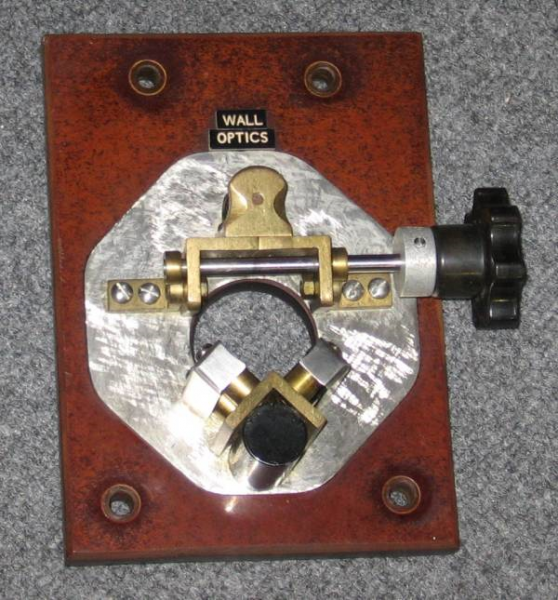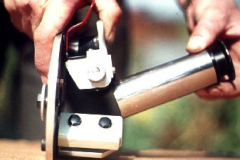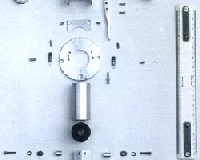Introduction
Designed and donated to the world by telescope maker and former member John Wall.
The design has two principle features:-
- Restriction of movement of the eyepiece focusing tube to one degree of motion – which is linear – and a secondary motion of rotation.
- The rapid interchange of eyepieces having different magnifications.
The restricted linear motion is achieved by mounting the eyepiece tube on rollers in a VEE formation using well known kinematic principles. This configuration eliminates side wobble and sticking, and the need to machine high precision bushings for the eyepiece tube in order to achieve accurate focusing action. Most CEM’s use this system only, especially in conjunction with motorised focusing for CCD work. The linear motion is achieved by using a smooth pinion, which bears onto the focusing tube under light pressure.
Classical CEM
Features: VEE block ball race support rollers for eyepiece tube; hinged bracket; actuating lever. The smooth pinion bears directly on the eyepiece tube – one of a suite of removable and interchangeable eyepieces.
The quick release of the eyepiece tube: note the thumb tab action – this is an alternative to the sidelever.
The quick action release is the second and more important function of the CEM. By lifting a lever the focusing pinion is moved away from the eyepiece tube, in order to release it. This enables rapid eyepiece changing in the dark. The focusing pinion is mounted on a hinged, spring loaded, bracket. The application of this mode is most useful for visual observations and camera work.
It’s Home!
The original Crayford Eyepiece Mount has returned home! It has been donated by creator and telescope maker John Wall and is now on display in its special Perspex box at the Pavilion. Below is a picture of it.

John Wall Interviewed by the BBC




